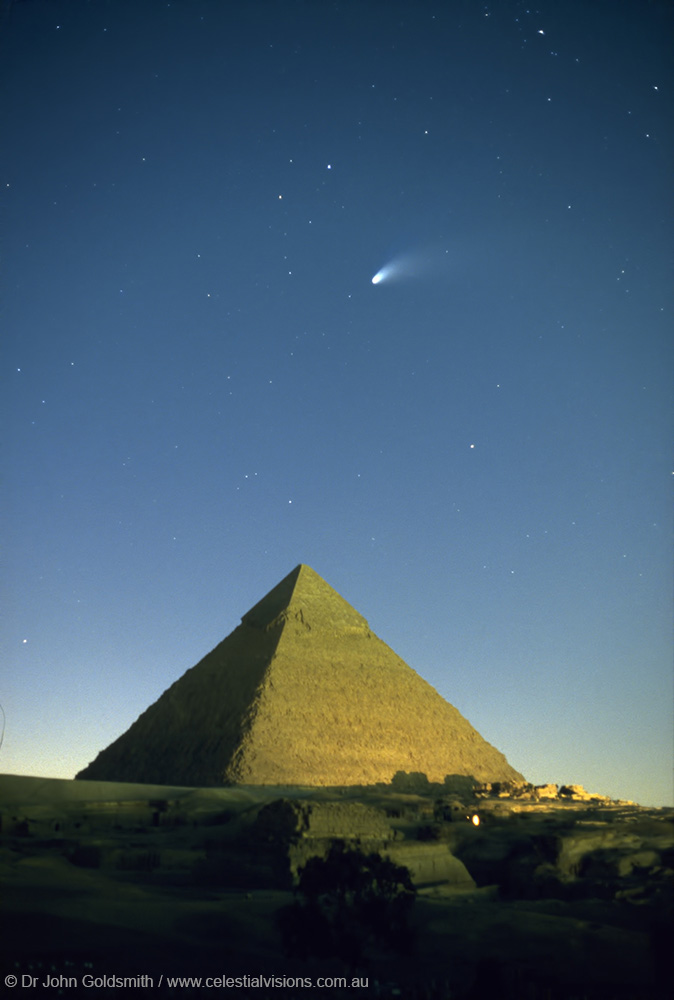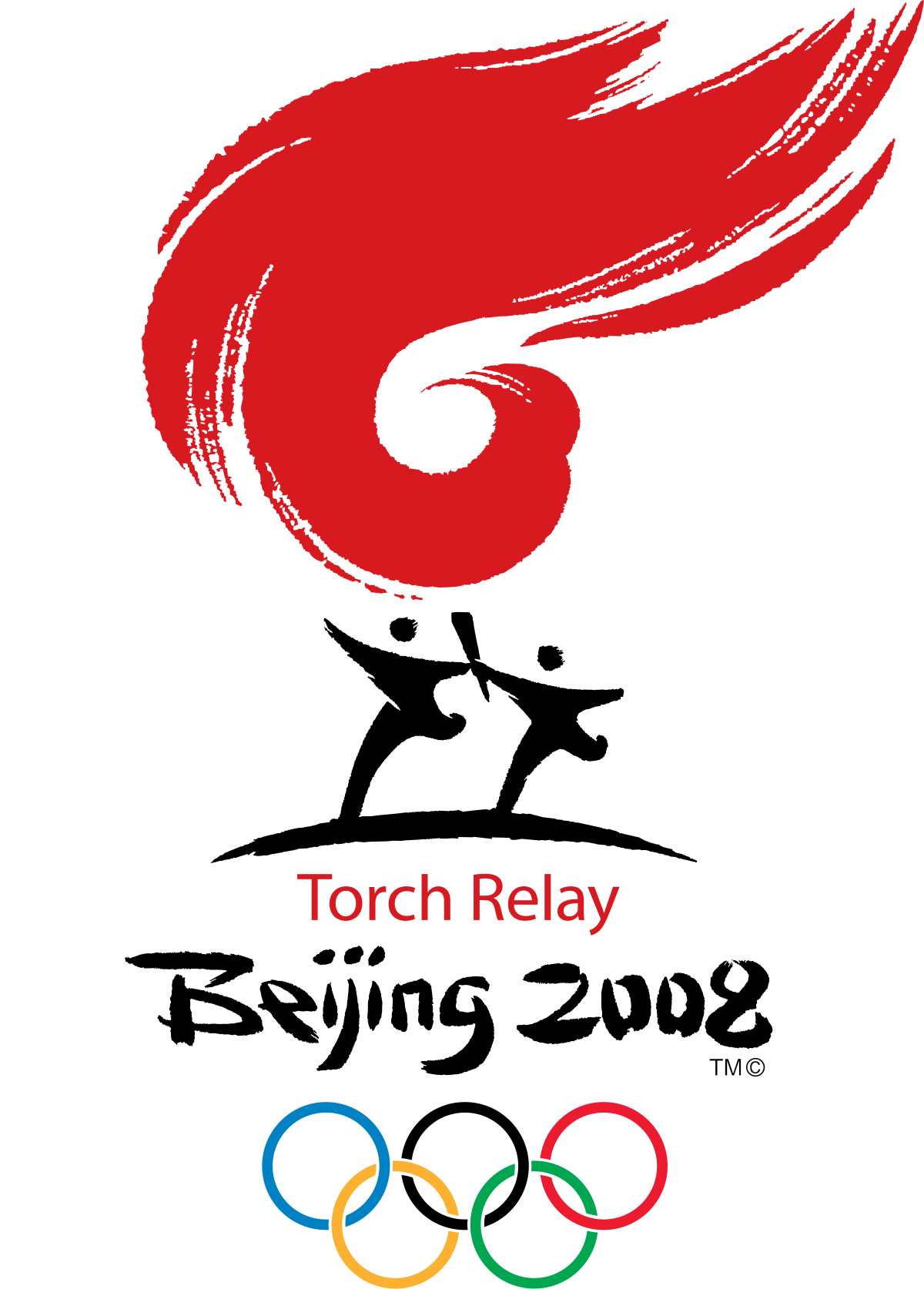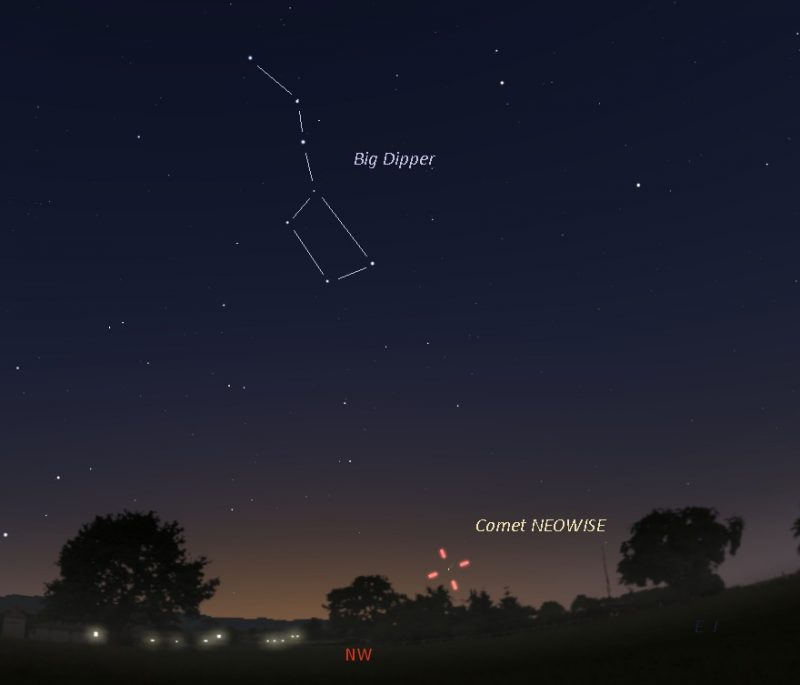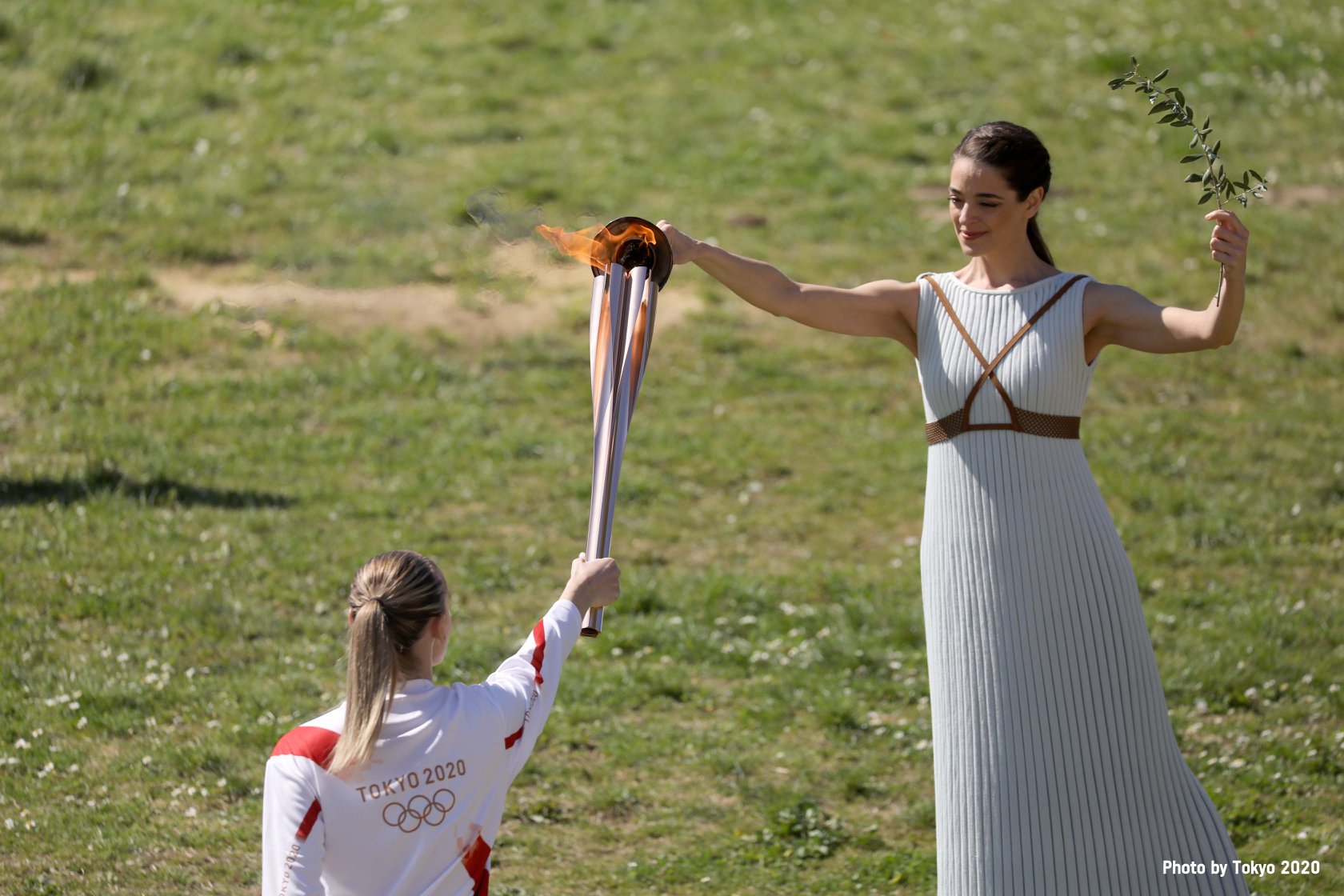
Comet Hale–Bopp (formally designated C/1995 O1) is a comet that was perhaps the most widely observed of the 20th century and one of the brightest seen for many decades.
Alan Hale and Thomas Bopp discovered Comet Hale–Bopp separately on July 23, 1995 before it became visible to the naked eye. It is difficult to predict the maximum brightness of new comets with any degree of certainty, but Hale–Bopp met or exceeded most predictions when it passed perihelion on April 1, 1997. It was visible to the naked eye for a record 18 months, twice as long as the Great Comet of 1811, the previous record holder. Accordingly, Hale–Bopp was dubbed the great comet of 1997.
Hale–Bopp became visible to the naked eye in May 1996, and although its rate of brightening slowed considerably during the latter half of that year,[17] scientists were still cautiously optimistic that it would become very bright. It was too closely aligned with the Sun to be observable during December 1996, but when it reappeared in January 1997 it was already bright enough to be seen by anyone who looked for it, even from large cities with light-polluted skies.[18]

Comet Hyakutake (Japanese pronunciation: [çakɯ̥take], formally designated C/1996 B2) is a comet, discovered on 31 January 1996,[1] that passed very close to Earth in March of that year. It was dubbed The Great Comet of 1996; its passage near the Earth was one of the closest cometary approaches of the previous 200 years. Hyakutake appeared very bright in the night sky and was widely seen around the world. The comet temporarily upstaged the much anticipated Comet Hale–Bopp, which was approaching the inner Solar System at the time.
After its close approach to the Earth, the comet faded to about 2nd magnitude. It reached perihelion on 1 May 1996, brightening again and exhibiting a dust tail in addition to the gas tail seen as it passed the Earth. By this time, however, it was close to the Sun and was not seen as easily. It was observed passing perihelion by the SOHO Sun-observing satellite, which also recorded a large coronal mass ejection being formed at the same time. Its distance from the Sun at perihelion was 0.23 AU, well inside the orbit of Mercury.[13]

The 1996 Summer Olympics torch relay was run from April 27, 1996, until July 19, 1996, prior to the 1996 Summer Olympics in Atlanta.[1] The route covered 26,875 kilometres (16,699 mi) across the United States and included a trek on the Pony Express, a ride on the Union Pacific Railroad, and a torch was taken into space for the first time. The relay involved over 12,000 torchbearers, including Muhammad Ali, who was chosen to light the Olympic cauldron.[2]



Search Results
Web results





The original schedule of the torch relay in Japan was from 26 March to 24 July 2020. After the postponement of the Summer Olympics to 2021, all relays were delayed by 364 days (one day less than a full year to preserve the same days of the week), this is taken from the original 2020 schedule:


Search Results
Search Results
Search Results
Web results



No comments:
Post a Comment